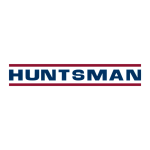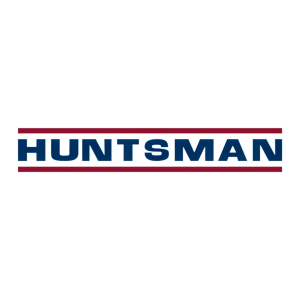Welcome to our dedicated page for Huntsman SEC filings (Ticker: HUN), a comprehensive resource for investors and traders seeking official regulatory documents including 10-K annual reports, 10-Q quarterly earnings, 8-K material events, and insider trading forms.
Huntsman’s 300-page disclosures dive deep into MDI pricing cycles, feedstock volatility, and long-term environmental liabilities—critical data that can hide in footnotes. If you’ve ever searched the Huntsman insider trading Form 4 transactions feed or tried to isolate segment margins inside a dense 10-K, you know the challenge.
Stock Titan solves it. Our AI reads every Huntsman quarterly earnings report 10-Q filing, 8-K material events, and proxy statement to surface what matters: cash-flow swings, resin capacity updates, and executive pay details. With real-time alerts, you’ll see Huntsman Form 4 insider transactions real-time alongside concise explanations. Need the big picture? The platform delivers a Huntsman annual report 10-K simplified summary plus red-flag sections investors monitor most—pension obligations, feedstock contracts, and compliance costs.
Here’s how professionals use the page:
- Track Huntsman executive stock transactions Form 4 before earnings calls.
- Compare segment performance with our Huntsman earnings report filing analysis.
- Quickly interpret a sudden plant outage via the latest Huntsman 8-K material events explained.
- Review governance metrics inside the Huntsman proxy statement executive compensation section.
Whether you’re understanding Huntsman SEC documents with AI for the first time or validating a valuation model, our platform distills complex chemical disclosures into actionable, plain-English insights—updated the moment EDGAR publishes.
Huntsman Corporation (HUN) filed its Q3 2025 10‑Q, reporting total revenues of $1,460 million versus $1,540 million a year ago, reflecting softer sales across its portfolio. Operating income was $6 million compared with $42 million in the prior-year quarter, and net loss attributable to Huntsman was $25 million, or $0.14 per share.
For the first nine months of 2025, revenues were $4,328 million versus $4,584 million a year earlier. Year‑to‑date results include $137 million of restructuring, impairment and plant closing costs. Cash from operating activities improved to $221 million for the nine months, up from $126 million, supported by inventory reductions. Cash and cash equivalents were $468 million as of September 30, 2025, and total debt consisted of $378 million current and $1,630 million long‑term. The company continued its quarterly dividend at $0.25 per share. Shares outstanding were 173,751,026 as of October 22, 2025.
Huntsman Corporation (HUN) furnished an update on third-quarter 2025 results. The company issued a press release for the three months ended September 30, 2025, attached as Exhibit 99.1, and scheduled a conference call on November 7, 2025 at 10:00 a.m. ET.
Investors can join via webcast or by dialing (877) 402-8037 (domestic) or (201) 378-4913 (international). Presentation slides and a replay will be available through the webcast link and Huntsman’s investor relations website.
Dimensional Fund Advisors LP reports beneficial ownership of
Huntsman Corporation (HUN) – Form 4 insider filing (08/05/2025)
Division President Jan Buberl reported an administrative share withholding related to restricted-stock vesting. On 08/01/2025, the company withheld 422 common shares (transaction code F) at an average price of $9.21 to cover tax obligations. Following the transaction, Buberl still owns 30,203 shares directly.
No open-market purchase or sale occurred; the filing simply settles payroll taxes upon vesting. The residual stake represents roughly $278k in market value (at the same price), indicating continuing alignment with shareholders. The small size (<1.5% of Buberl’s holdings) and non-discretionary nature suggest neutral impact on Huntsman’s investment thesis.
Huntsman (HUN) Q2-25 10-Q highlights
- Revenue: $1.46 bn, down 7% YoY; 1H-25 revenue $2.87 bn, -6% YoY.
- Profitability: Gross profit fell 25% to $182 m; operating swung to a $120 m loss vs $34 m profit last year, hurt by $124 m of restructuring/impairment costs.
- Net results: Net loss attributable to shareholders was $158 m (-$0.92 EPS) vs $22 m (+$0.13 EPS) prior-year quarter. 1H-25 loss widened to $163 m (-$0.94 EPS).
- Cash & liquidity: YTD operating cash flow turned positive at $17 m (vs -$19 m). Cash rose to $399 m. Net debt increased as long-term borrowings grew $153 m to $1.66 bn; revolver draws of $481 m partly offset by $322 m repayments.
- Balance sheet: Equity declined $131 m to $2.83 bn, mainly from losses and dividends ($0.25/sh, $44 m per quarter).
- Segment actions: Ongoing European cost-reduction and plant-closure programs drove elevated restructuring charges; management uses adjusted EBITDA to assess segments.
- Comprehensive income: FX translation gains (+$68 m) and pension adjustments (+$5 m) partly offset the net loss, reducing accumulated OCI deficit to $-1.09 bn.
- Share count: 172.6 m diluted shares outstanding on 23 Jul 25; buyback activity negligible.
Overall, lower volumes/pricing and heavy restructuring costs pushed Huntsman into a quarterly loss despite modest cash-flow improvement.


